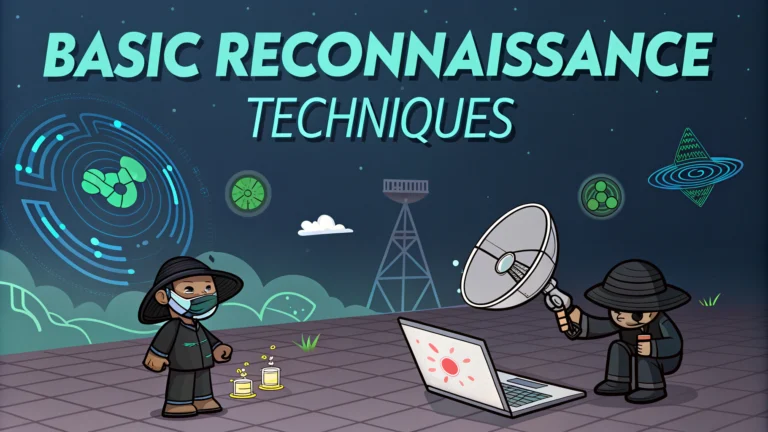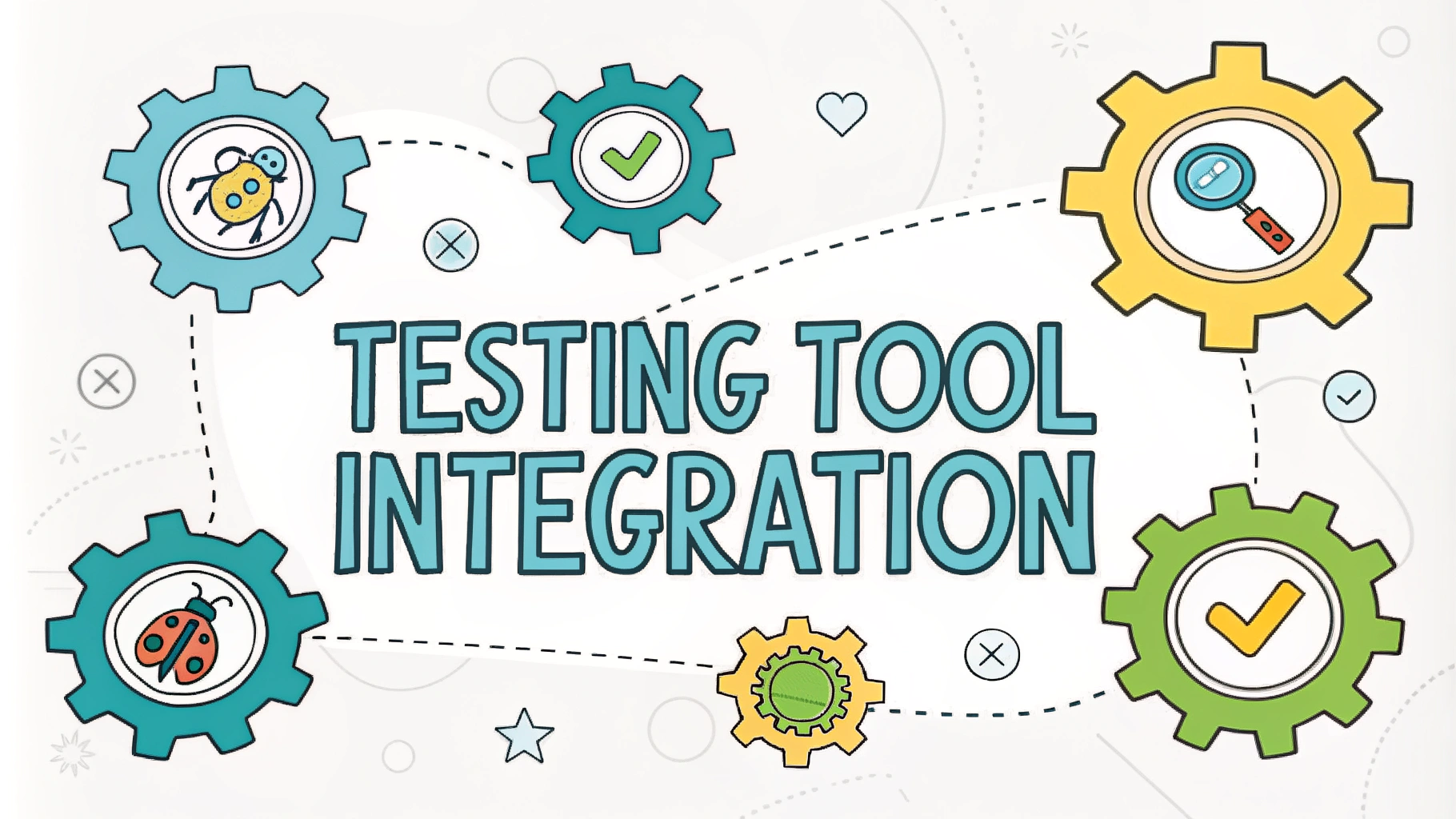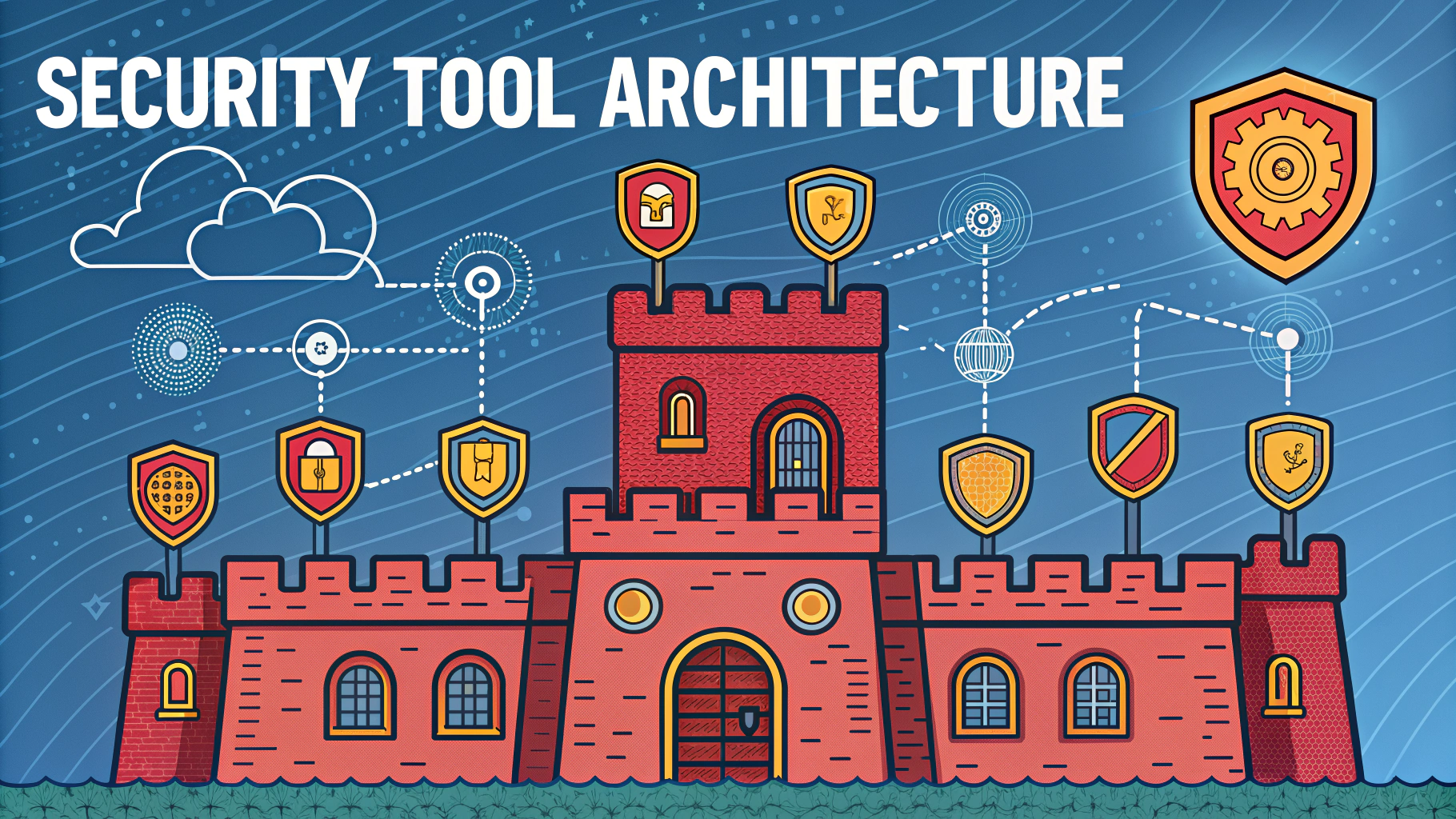Reconnaissance is the first and most essential phase of penetration testing, where testers gather critical information about their target systems and networks.
Understanding basic reconnaissance techniques helps security professionals identify potential vulnerabilities and entry points before launching more advanced testing procedures.
This guide covers practical reconnaissance methods that penetration testers use to collect valuable intelligence while maintaining stealth and efficiency.
Passive Reconnaissance Techniques
- WHOIS Lookups: Query domain registrar databases to obtain domain ownership, contact details, and nameserver information
- DNS Enumeration: Discover subdomains, mail servers, and other DNS records using tools like dig, nslookup, or DNSrecon
- Google Dorks: Use advanced search operators to find exposed files, directories, and sensitive information
- Social Media Research: Analyze company profiles and employee information on LinkedIn, Twitter, and other platforms
Active Reconnaissance Tools
- Nmap: Scan networks to identify open ports, services, and operating systems
- Shodan: Search for internet-connected devices and their vulnerabilities
- Maltego: Map relationships between online entities and gather intelligence
- Recon-ng: Automate reconnaissance tasks using various modules and APIs
Web Application Reconnaissance
Use specialized tools like Burp Suite, OWASP ZAP, or Nikto to scan web applications for vulnerabilities and misconfigurations.
| Tool | Purpose | Website |
|---|---|---|
| Burp Suite | Web vulnerability scanning | portswigger.net/burp |
| OWASP ZAP | Security testing | zaproxy.org |
| Nikto | Web server scanning | cirt.net/Nikto2 |
Information Gathering Checklist
- Identify IP ranges and network topology
- Map domain and subdomain structure
- Document exposed services and versions
- List potential entry points
- Record security measures in place
- Catalog discovered vulnerabilities
Best Practices for Reconnaissance
- Always obtain proper authorization before testing
- Document all findings systematically
- Use stealth techniques to avoid detection
- Verify findings to eliminate false positives
- Maintain detailed logs of all activities
Legal and Ethical Considerations
Ensure compliance with local laws and obtain written permission before conducting any reconnaissance activities.
Follow responsible disclosure practices when discovering vulnerabilities.
Respect privacy and data protection regulations during information gathering.
Next Steps in Your Security Testing Journey
Move on to vulnerability scanning and exploitation only after thoroughly documenting reconnaissance findings.
Keep learning about new reconnaissance techniques and tools as they emerge.
Join security communities like OWASP (owasp.org) and Hack The Box (hackthebox.com) to practice reconnaissance skills legally.
Advanced Reconnaissance Tactics
- Infrastructure Mapping: Create detailed network topology diagrams using traceroute and visual mapping tools
- Service Fingerprinting: Identify specific versions of running services and potential vulnerabilities
- SSL/TLS Analysis: Check certificate information and encryption configurations
- Cloud Resource Discovery: Identify cloud-based assets and storage buckets
Automated Reconnaissance
Framework Integration
- Combine multiple tools into automated workflows
- Create custom scripts for repetitive tasks
- Implement continuous monitoring solutions
- Set up alerting for new discoveries
Data Processing
- Use data correlation tools to identify patterns
- Implement machine learning for anomaly detection
- Generate automated reports from findings
Risk Mitigation Strategies
Organizations should implement the following measures to protect against reconnaissance:
- Regular monitoring of digital footprint
- Information exposure controls
- Security headers implementation
- Regular external security assessments
- Employee security awareness training
Mastering the Art of Reconnaissance
Effective reconnaissance requires continuous learning, proper documentation, and ethical practices. Security professionals must balance thoroughness with stealth while maintaining compliance with legal requirements.
Stay current with emerging technologies and techniques to enhance reconnaissance capabilities and contribute to stronger security postures.
Remember that reconnaissance is an iterative process that forms the foundation for all subsequent security testing activities.
FAQs
- What is reconnaissance in penetration testing?
Reconnaissance is the initial phase of penetration testing where information is gathered about the target system, network, or organization through various methods to identify potential vulnerabilities and entry points. - What are the two main types of reconnaissance?
Passive reconnaissance involves gathering information without directly interacting with the target (using public sources, WHOIS lookups), while active reconnaissance involves direct interaction with the target (port scanning, network mapping). - What tools are commonly used for basic network reconnaissance?
Common tools include Nmap for port scanning, Shodan for internet-connected device discovery, Recon-ng for web reconnaissance, and Maltego for information gathering and relationship mapping. - How do you perform DNS enumeration?
DNS enumeration is performed using tools like dig, nslookup, and DNSRecon to discover DNS servers, records, and subdomains associated with the target domain. - What is OSINT and why is it important in reconnaissance?
OSINT (Open Source Intelligence) involves collecting information from publicly available sources like social media, company websites, and public records to gather intelligence without alerting the target. - What information should be gathered during the reconnaissance phase?
Key information includes IP ranges, domain names, email addresses, employee information, network infrastructure details, technology stack, and security measures in place. - How can you identify the operating system of a target during reconnaissance?
OS fingerprinting can be performed using tools like Nmap with the -O flag, analyzing TCP/IP stack behavior, or through banner grabbing of services running on open ports. - What are some common web application reconnaissance techniques?
Web application reconnaissance includes directory enumeration, checking robots.txt files, analyzing source code, identifying web technologies using Wappalyzer, and using web vulnerability scanners. - How do you perform social engineering reconnaissance legally?
Legal social engineering reconnaissance involves gathering publicly available information from LinkedIn, company websites, job postings, and social media without violating privacy laws or terms of service. - What role does subdomain enumeration play in reconnaissance?
Subdomain enumeration helps discover additional attack surfaces by identifying all subdomains associated with the target domain using tools like Sublist3r, Amass, or Certificate Transparency logs.







